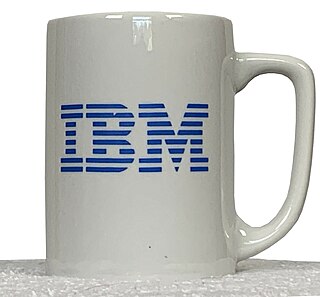Related Research Articles

Bayerische Motoren Werke AG, abbreviated as BMW, is a German multinational manufacturer of luxury vehicles and motorcycles headquartered in Munich, Bavaria. The corporation was founded in 1916 as a manufacturer of aircraft engines, which it produced from 1917 until 1918 and again from 1933 to 1945.

A logo is a graphic mark, emblem, or symbol used to aid and promote public identification and recognition. It may be of an abstract or figurative design or include the text of the name it represents as in a wordmark.

A corporate identity or corporate image is the manner in which a corporation, firm or business enterprise presents itself to the public. The corporate identity is typically visualized by branding and with the use of trademarks, but it can also include things like product design, advertising, public relations etc. Corporate identity is a primary goal of the corporate communications, in order to maintain and build the identity to accord with and facilitate the corporate business objectives.
A trademark is a word, phrase, or logo that identifies the source of goods or services. Trademark law protects a business' commercial identity or brand by discouraging other businesses from adopting a name or logo that is "confusingly similar" to an existing trademark. The goal is to allow consumers to easily identify the producers of goods and services and avoid confusion.
Mind share relates to the development of consumer awareness or popularity, and is one of the main objectives of advertising and promotion. When people think of examples of a product type or category, they usually think of a limited number of brand names. The aim of mind share is to establish a brand as being one of the best kinds of a given product or service, and to even have the brand name become a synonym for the product or service offered. For example, a prospective buyer of a college education will have several thousand colleges to choose from. However, the evoked set, or set of schools considered, will probably be limited to about ten. Of these ten, the colleges that the buyer is most familiar with will receive the greatest attention.
In marketing, brand management begins with an analysis on how a brand is currently perceived in the market, proceeds to planning how the brand should be perceived if it is to achieve its objectives and continues with ensuring that the brand is perceived as planned and secures its objectives. Developing a good relationship with target markets is essential for brand management. Tangible elements of brand management include the product itself; its look, price, and packaging, etc. The intangible elements are the experiences that the target markets share with the brand, and also the relationships they have with the brand. A brand manager would oversee all aspects of the consumer's brand association as well as relationships with members of the supply chain.

A generic trademark, also known as a genericized trademark or proprietary eponym, is a trademark or brand name that, because of its popularity or significance, has become the generic term for, or synonymous with, a general class of products or services, usually against the intentions of the trademark's owner.

Merchandising is any practice which contributes to the sale of products to a retail consumer. At a retail in-store level, merchandising refers to displaying products that are for sale in a creative way that entices customers to purchase more items or products.
Trademark dilution is a trademark law concept giving the owner of a famous trademark standing to forbid others from using that mark in a way that would lessen its uniqueness. In most cases, trademark dilution involves an unauthorized use of another's trademark on products that do not compete with, and have little connection with, those of the trademark owner. For example, a famous trademark used by one company to refer to hair care products might be diluted if another company began using a similar mark to refer to breakfast cereals or spark plugs.

Rebranding is a marketing strategy in which a new name, term, symbol, design, concept or combination thereof is created for an established brand with the intention of developing a new, differentiated identity in the minds of consumers, investors, competitors, and other stakeholders. Often, this involves radical changes to a brand's logo, name, legal names, image, marketing strategy, and advertising themes. Such changes typically aim to reposition the brand/company, occasionally to distance itself from negative connotations of the previous branding, or to move the brand upmarket; they may also communicate a new message a new board of directors wishes to communicate.
Direct response television (DRTV) is any television advertising that asks consumers to respond directly to the company — usually either by calling a toll-free telephone number, sending an SMS message, or by visiting a web site. This is a form of direct response marketing.

An advertising campaign is a series of advertisement messages that share a single idea and theme which make up an integrated marketing communication (IMC). An IMC is a platform in which a group of people can group their ideas, beliefs, and concepts into one large media base. Advertising campaigns utilize diverse media channels over a particular time frame and target identified audiences.
Product naming is the discipline of deciding what a product will be called, and is very similar in concept and approach to the process of deciding on a name for a company or organization. Product naming is considered a critical part of the branding process, which includes all of the marketing activities that affect the brand image, such as positioning and the design of logo, packaging and the product itself. The process involved in product naming can take months or years to complete. Some key steps include specifying the objectives of the branding, developing the product name itself, evaluating names through target market testing and focus groups, choosing a final product name, and finally identifying it as a trademark for protection.
In Internet marketing, search advertising is a method of placing online advertisements on web pages that show results from search engine queries. Through the same search-engine advertising services, ads can also be placed on Web pages with other published content.
Brand awareness is the extent to which customers are able to recall or recognize a brand under different conditions. Brand awareness is one of two dimensions from brand knowledge, an associative network memory model. Brand awareness is a key consideration in consumer behavior, advertising management, and brand management. The consumer's ability to recognize or recall a brand is central to purchasing decision-making. Purchasing cannot proceed unless a consumer is first aware of a product category and a brand within that category. Awareness does not necessarily mean that the consumer must be able to recall a specific brand name, but they must be able to recall enough distinguishing features for purchasing to proceed. Creating brand awareness is the main step in advertising a new product or bringing back the older brand in light.
Trademark distinctiveness is an important concept in the law governing trademarks and service marks. A trademark may be eligible for registration, or registrable, if it performs the essential trademark function, and has distinctive character. Registrability can be understood as a continuum, with "inherently distinctive" marks at one end, "generic" and "descriptive" marks with no distinctive character at the other end, and "suggestive" and "arbitrary" marks lying between these two points. "Descriptive" marks must acquire distinctiveness through secondary meaning—consumers have come to recognize the mark as a source indicator—to be protectable. "Generic" terms are used to refer to the product or service itself and cannot be used as trademarks.
A trademark is a type of intellectual property consisting of a recognizable sign, design, or expression that identifies products or services from a particular source and distinguishes them from others. The trademark owner can be an individual, business organization, or any legal entity. A trademark may be located on a package, a label, a voucher, or on the product itself. Trademarks used to identify services are sometimes called service marks.

A brand is a name, term, design, symbol or any other feature that distinguishes one seller's good or service from those of other sellers. Brands are used in business, marketing, and advertising for recognition and, importantly, to create and store value as brand equity for the object identified, to the benefit of the brand's customers, its owners and shareholders. Brand names are sometimes distinguished from generic or store brands.
A sound trademark or sound logo or audio logo is a trademark where sound is used to perform the trademark function of uniquely identifying the commercial origin of products or services.

The BMW X2 is a subcompact luxury crossover SUV produced by BMW. It was first showcased as the BMW Concept X2 at the 2016 Paris Motor Show, with a production version unveiled in October 2017. Sales commenced in March 2018. It is considered a sportier and less practical alternative to the X1, as is the case with other even-numbered X models with its respective counterparts.
References
- ↑ "NIA IMPACT Collaboratory". National Institute on Aging. Retrieved 2022-11-24.
- ↑ "Difference between Bimmer and Beemer". Boston Chapter BMW Car Club of America Inc. Archived from the original on 2007-07-01. Retrieved 2009-07-07.
- ↑ "Trademark Status info". USPTO (United States Patent and Trademark Office).